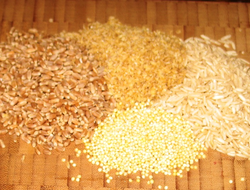Manganese: one of the trace metal minerals
Published: April 05, 2019
Manganese, like several other trace minerals such as zinc, iron, copper and molybdenum required for health, is a metal mineral.
As a metal, manganese has a wide variety of industrial uses, and as a mineral is involved in important metabolic reactions in your body.
In nature, manganese (Mn) is often associated with iron, and in your body as part of several metalloproteins.
The amount of manganese stored in your body varies between 10-20 mgs and is stored mostly in your bones, liver, kidneys and pancreas as either Mn2+ or Mn3+.
Manganese is required as a co-factor for nearly all classes of enzymes and also as a catalyst for metabolic reactions.
Despite the apparent requirement for manganese in significant metabolic functions, the exact mechanisms of all manganese related metabolic processes are not known.
However, there is sufficient knowledge about this metal mineral to determine why manganese is an essential nutrient and dietary requirement.
Read on to learn more about this mineral's functions in your body, good dietary sources, your dietary requirement, and more.
The varied roles of manganese in your body
The principle role of manganese in your body is as a cofactor for several enzymes (metalloproteins) which are involved in the metabolism of carbohydrates, lipids, amino acids, bone formation and pyruvate conversion as part of energy metabolism.
Although manganese may be replaced by magnesium (Mg2+) or other divalent cations, enzymes which are activated by manganese include:
Transferases
As the name suggests these enzymes transfer “functional groups” such as a glycosyl group from one molecule to another and are involved in multiple reactions in your body.
As a cofactor manganese is required by glycosyl transferase (one enzyme which does not accept magnesium as a replacement for manganese).
This enzyme transfers sugar molecules such as galactose (from milk) between various molecules and is a significant actor in the synthesis of proteoglycans.
Proteoglycans are integral components of the fibrous extracellular matrix which exists between your body cells and regulate the movement of sodium, potassium, calcium and water throughout extracellular tissue.
For example, mucopolysaccaride is a component of mucous, the fluid which surrounds and provides lubrication for your joints, and bone and connective tissue as part of collagen...link to the full article to learn more.
References
1.
Gropper, S.S., Smith, J.L. & Groff, J.L. (2005). Advanced Nutrition and Human Metabolism (4thEd.). Belmont, CA: Thomson Wadsworth.
2.
Whitney, E. & Rady Rolfes, S. (2005). Understanding Nutrition. Belmont, CA: Thomson Wadsworth

